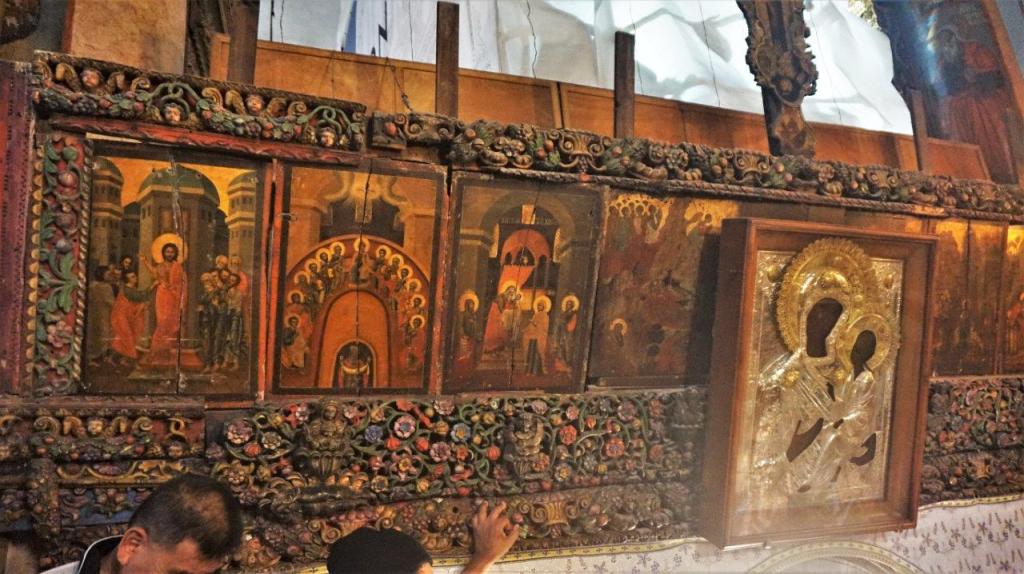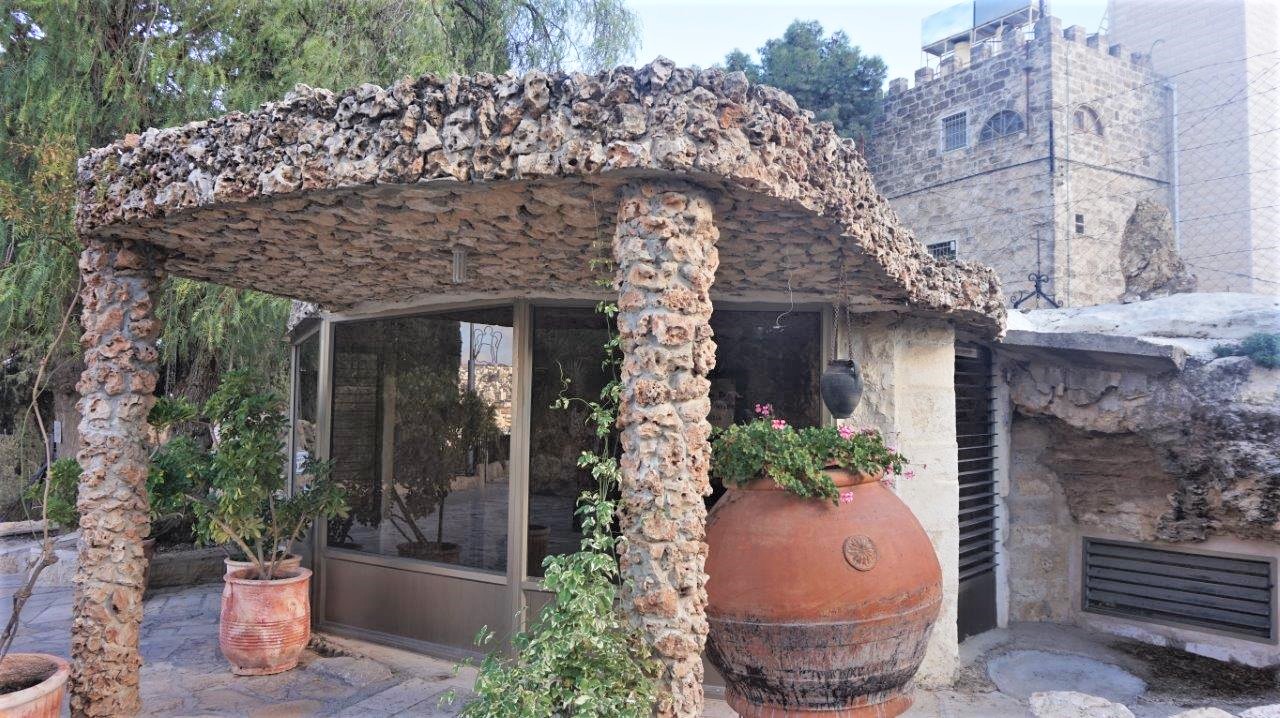I was in Bethlehem for 3 days in December 2019 and somehow found a reason to visit Manger Square daily, soaking in the vibes, sounds and smells. It was a constant hive of activity with numerous street food stalls dotted around the square and a 55-foot high Christmas tree.
Located in the heart of the Old City, Manger Square is flanked by landmark religious sites such as the 4th century Church of the Nativity (dominating the eastern side), the Church of St. Catherine (on the western side), and the Mosque of Omar, making it one of the top attractions in Bethlehem.


It takes its name from the Church of the Nativity that enshrines the Grotto of the Nativity (the “manger”) where Jesus was born.

I enjoyed strolling along its many narrow, old stone alleyways lined with small jewelry shops and houseware stores. Star Street – the historical entrance to Bethlehem is an architectural landmark of beautifully ornamented, Ottoman traditional stone buildings dating back to the 17th century.

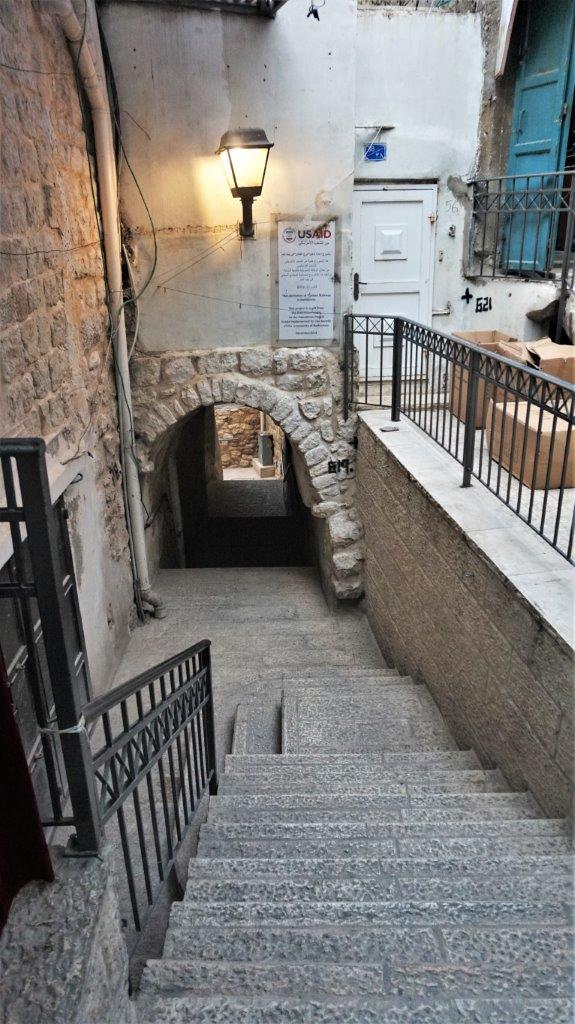


Home to the Bethlehem Peace Center and the Bethlehem Municipality building, this central plaza is a hub of modern life featuring cafes, shops and restaurants, souvenir stores, as well as playing host to many events throughout the year.
Church of the Nativity – birthplace of Jesus
One of the oldest working churches today

The first church built over the grotto where Mary gave birth to Jesus was commissioned by the Roman Emperor Constantine and his mother, Helena, in 339. Adorned with beautiful marble and mosaic, it was destroyed by a fire in the 6th century.
The current building is the new basilica built in 565, by the Byzantine Emperor Justinian, by adopting the architectural tone of the original basilica to replicate it as closely as possible.

Door of Humility
Entry to this ‘bigger-than-two-football-fields-put-together’ church is via a 5-foot tall “Door of Humility” Adults may enter, one at a time, and only by bowing.
The main entrance to the Church of the Nativity was gradually made lower and narrower in order to protect it from invaders.

The interior is characterised by 4 rows of 11 pillars, separating the aisles, two on each side and from the nave in the centre (bottom). The nave is a 200-foot prayer hall leading to the altar (top left). A trap door in the floor of the nave opens up to reveal a portion of the original mosaic pavement from the Constantinian basilica.
Over the centuries, there have been many restorations and repairs to the building. Extensive renovations ($18 million) which started in 2017 to save the roof from collapse, also revealed colourful wall mosaics depicting angels and saints.
The birthplace of Jesus, Grotto of the Nativity, is in a very small alcove under the main altar area. A semi circular flight of steps on the right of the altar leads down to the rectangular cave below.
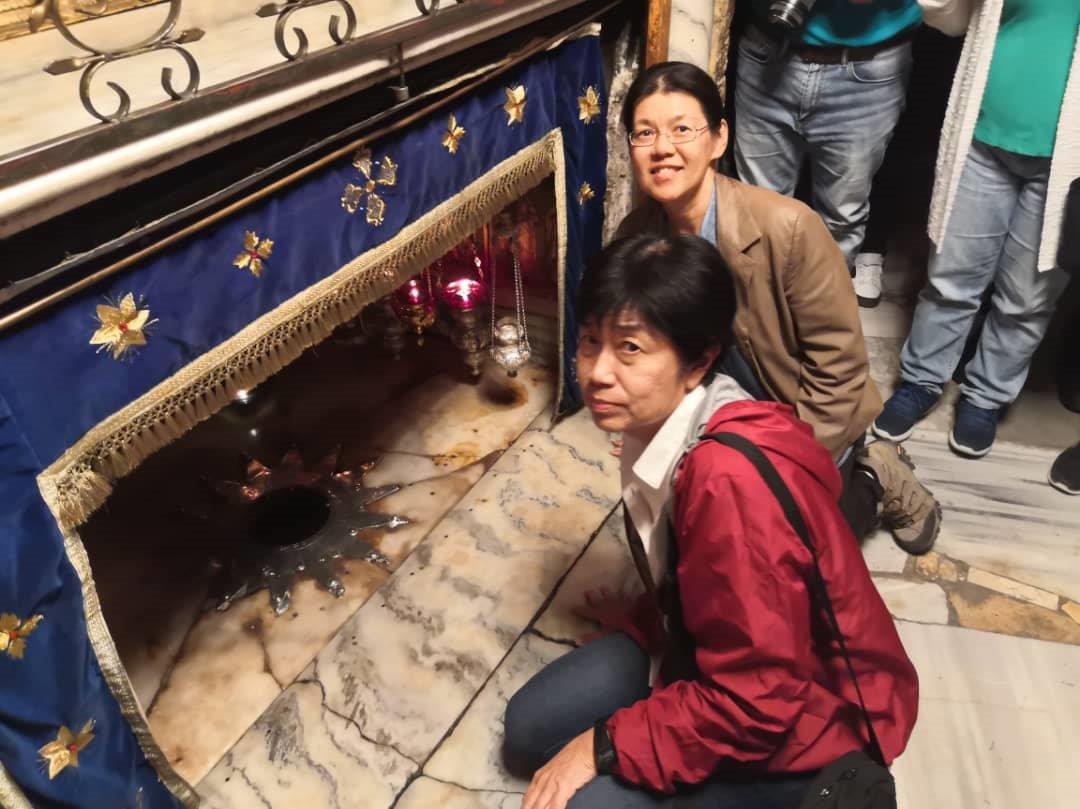
At this point, the long line that started from the nave almost comes to a standstill. To move the crowd along, our helpful guide was ready and waiting to quickly snap our photos.
A fourteen point silver star marks the very spot where Christ is believed to have been born. The floor is paved in marble, and 15 lamps hang above the star (six belong to the Greek Orthodox, five to the Armenian Apostolic and four to the Roman Catholics). Today, the guardianship of this 12,000 sqm complex surrounding the sacred grotto is shared among the three denominations.
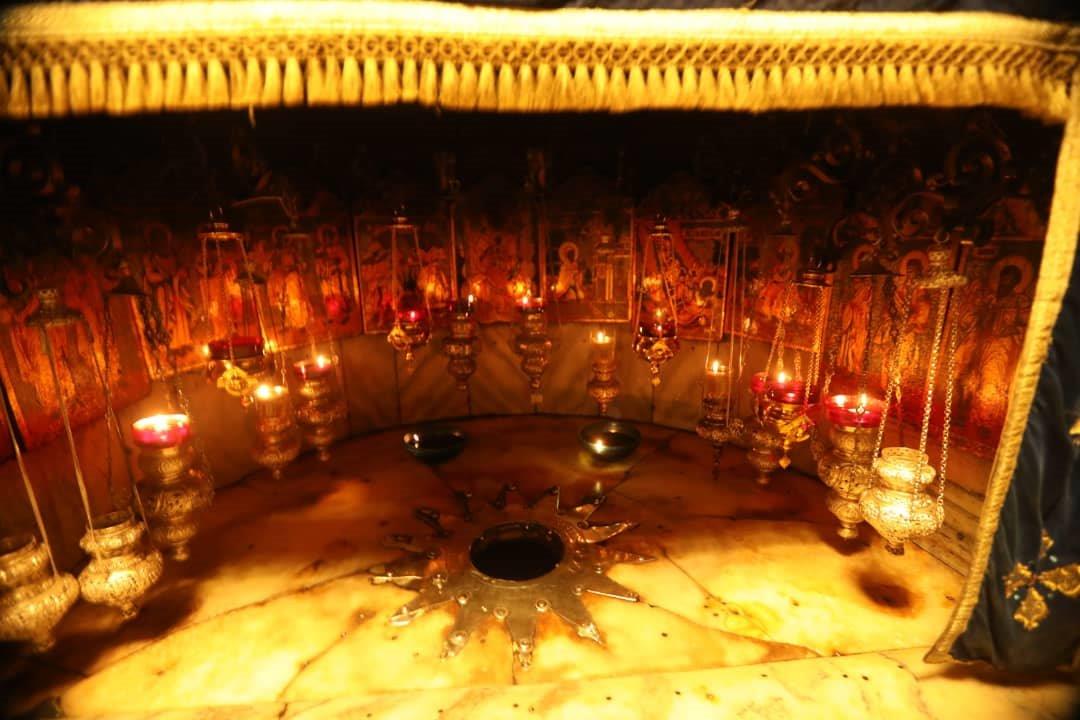
Steps away from the birthplace shrine, at a slightly lower level is the Chapel of the Manger, where Mary laid the newborn child in a crib. The rock shelf has been covered with marble, but the original rock may be seen around the manger.
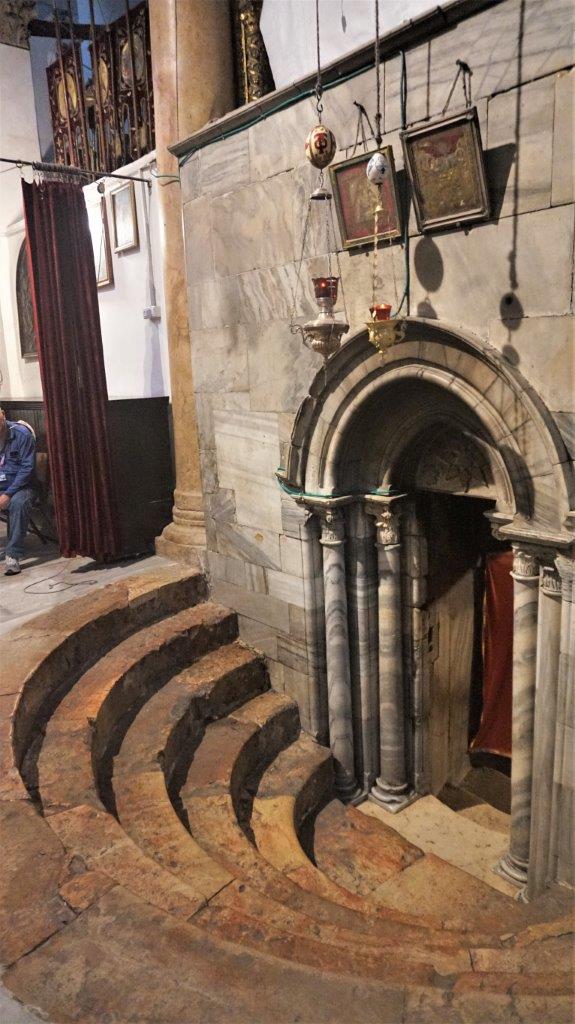

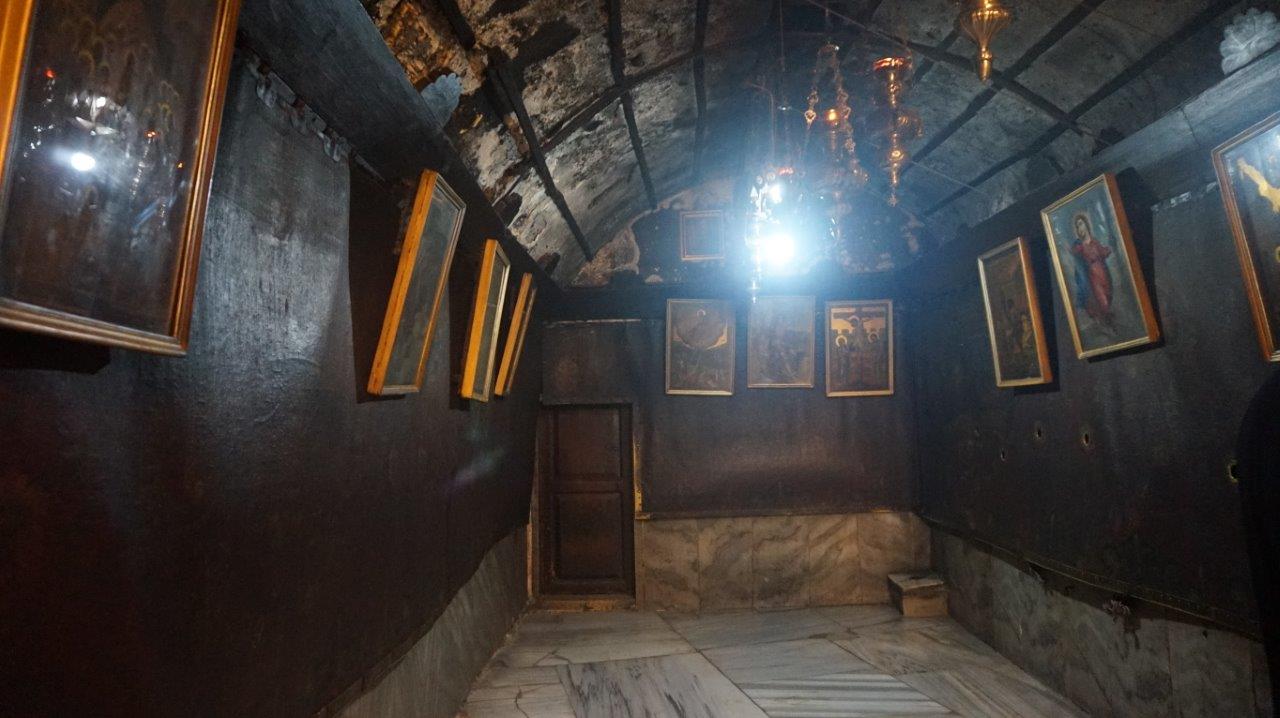
Back in the upper church, a door in the north apse leads to the Church of St. Catherine, via a stone passage way.
There is a noticeable change of pace and space once you leave the chaos and confines of the Grotto of the Nativity and step onto the inner courtyard of the adjoining church.
The Church of St. Catherine
The 19th century Church of St. Catherine is a Roman Catholic church located within the compound of the Church of the Nativity.

It was founded and rebuilt by the Franciscans in 1882 over the ruins of a 5th century monastery and a 12th century Crusader church.
Subsequently, the 1948 restoration works led by architect Antonio Barluzzi, is best represented in the 12th-century Cloister of St. Jerome.
Today, the Basilica is a spacious large modern looking church. One of the most beautiful features of the church is the stained glass window of the nativity scene, located high behind the altar. The colourful window was made in Belgium in 1926, and installed in 2000.


Underneath the church, chapels and ancient tombs feature prominently in underground caves deep below the surface.
Dedicated to St. Catherine of Alexandria, the church is said to be built on the site of Christ’s appearance to St. Catherine in 310 AD and his prediction of her martyrdom at the beginning of the 4th century. Who was St. Catherine of Alexandria? Of noble birth and well educated, Catherine converted hundreds of people to Christianity when she embraced the Christian faith at the age of 14. At 18 she was imprisoned for rebuking the emperor Maxentius of cruelty for persecuting Christians and worshipping false gods. The enraged emperor condemned her to a slow death on the breaking wheel. But when Catherine touched the wheel, it broke. She was then beheaded and tradition says angels carried her body to Mount Sinai, where a 6th century church and monastery were built in her honour. A memorial shrine was erected in memory of St. Catherine in 1347.
Present day
On 30 November 2019, the Vatican returned a fragment of what Christians believe to be the original manger, which was sent to Rome as a gift to the pope in the 7th century. The thumb-sized relic, displayed in an ornate silver case is now installed ‘forever’ in the Church of St. Catherine.
The Church of St. Catherine hosts the annual Christmas Eve Midnight mass, which is beamed live from Bethlehem to millions of Christians worldwide.
Church of the Nativity Opening Hours: Summer (April – September) : 6:30am – 7:30pm Winter (October – March) : 5:30am – 5:00pm NB: Grotto is closed during Holy Mass on Sunday mornings. Re-opens in the afternoon. Church of St. Catherine Summer (April – September) : 6:30am – 7:30pm Winter (October – March) : 5:00am – 5:00pm NB: Sunday mass (in Arabic) at 7:30am, 9:00am and 11:00am
Shepherds’ Field of the Franciscan Custody of the Holy Land
Shepherds’ Field is located in the broad valley of Beit Sahour, a mostly Christian village, not far from Bethlehem. It is an open park area with a church, fountain and grottoes.

This unassuming church marks the place where an angel appeared before Shepherds who were “watching their sheep by night”, to herald the birth of Jesus, telling them to go to Bethlehem where Jesus lay in a manger.
The modern church was built by the Franciscans in 1953, over an ancient cave near the ruins of a monastery. Designed by Antonio Barluzzi, the Shepherds’ Field Chapel is a simple grey stone structure, dodecagonal in shape (12 sides) and topped by a white dome.
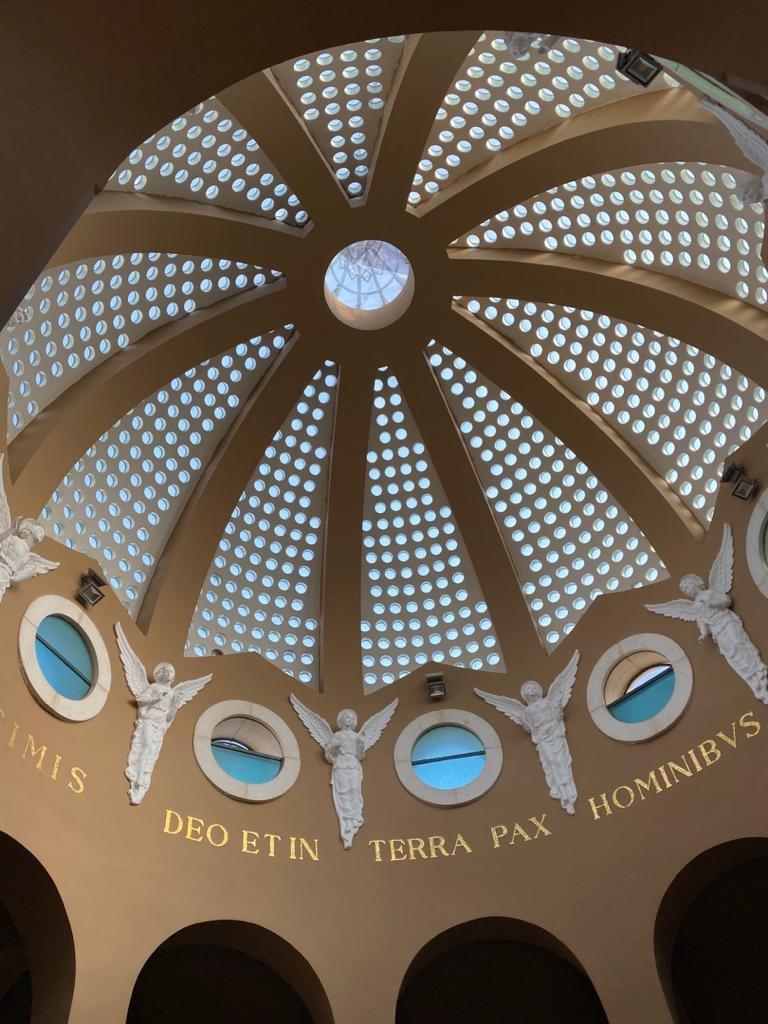
Inside, a simple altar table stands beneath the high domed ceiling, surrounded by tall arches. Above the arches Latin scriptures are written around the circumference of the inner dome.
The dome itself is perforated with small glass-covered openings to let in natural light, symbolizing the light of the angel.
Resembling a Shepherd’s tent, the interior has five apses, decorated with murals to depict relevant scenes such as the visitation of the angel, the shepherds and their flock and the Nativity.




Beyond the chapel is a natural rock shelter, believed to have been used by the Shepherds. With its pleasant surroundings and a fine view of the hills the cave is ideal for small group worship. There was a session in progress and I was amazed by how the small cave’s natural acoustics enhanced the hymn singing.

The low cave with soot-blackened roof, has been partly enclosed to form a small chapel with natural rough hewed walls.
We continued our exploration along the garden walk parallel to the chapel and cave. The ruins of a rectangular monastery are located at the north.
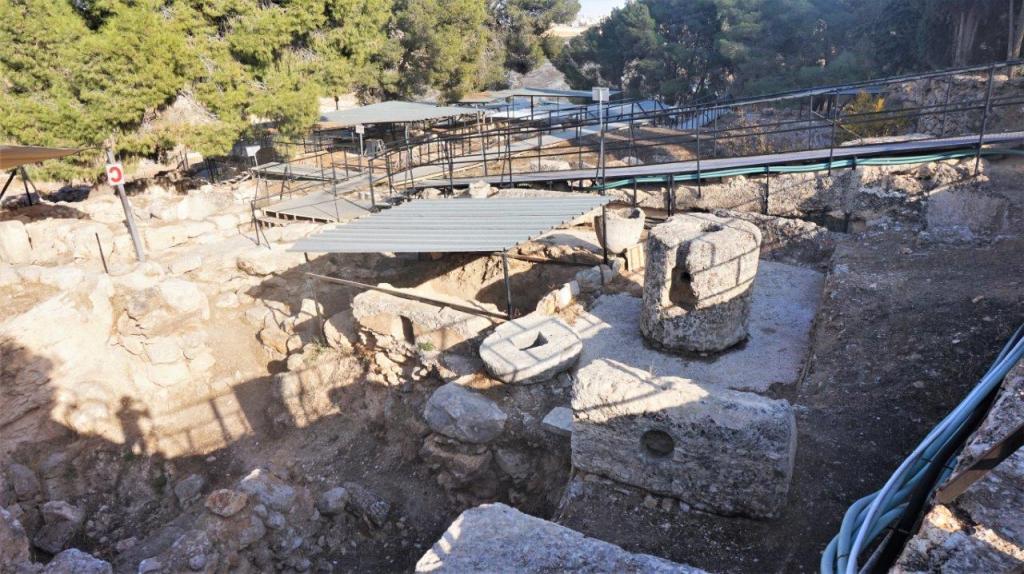
Excavation works led to the discovery of ruins of three different churches from the fifth, sixth and seventh centuries.
Rival Location Sites
Ruins of a 5-7th century Byzantine church at Kanisat al-Ruwat, marks the Greek Orthodox Shepherds’ Field, which I did not get to visit. Both sites claim the title of Shepherds’ Field, are in the same general location just 600m apart.
The Franciscan Shepherds’ Field is most visited as it’s more easily accessed and more tourists-friendly.
Franciscan Shepherds' Field Monday - Saturday : 8:00am – 4:45pm Sunday : 8.00am - 11.30am, 2:00pm – 4:45pm
Jordan-Holyland-Egypt
Full Itinerary 29 Nov – 10 Dec 2019
- 29 Nov
- 30 Nov – Lost city of Petra, Jordan
- 1 Dec
- 2 Dec
- 3 Dec
- 4 Dec
- 5 Dec
- 6 Dec – Route 90 – longest road in Israel
- 7 Dec – Mt Sinai by moonlight!
- 8 Dec – Giant Pyramids of Giza

